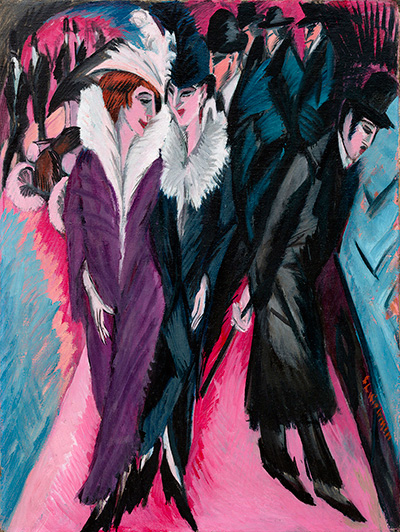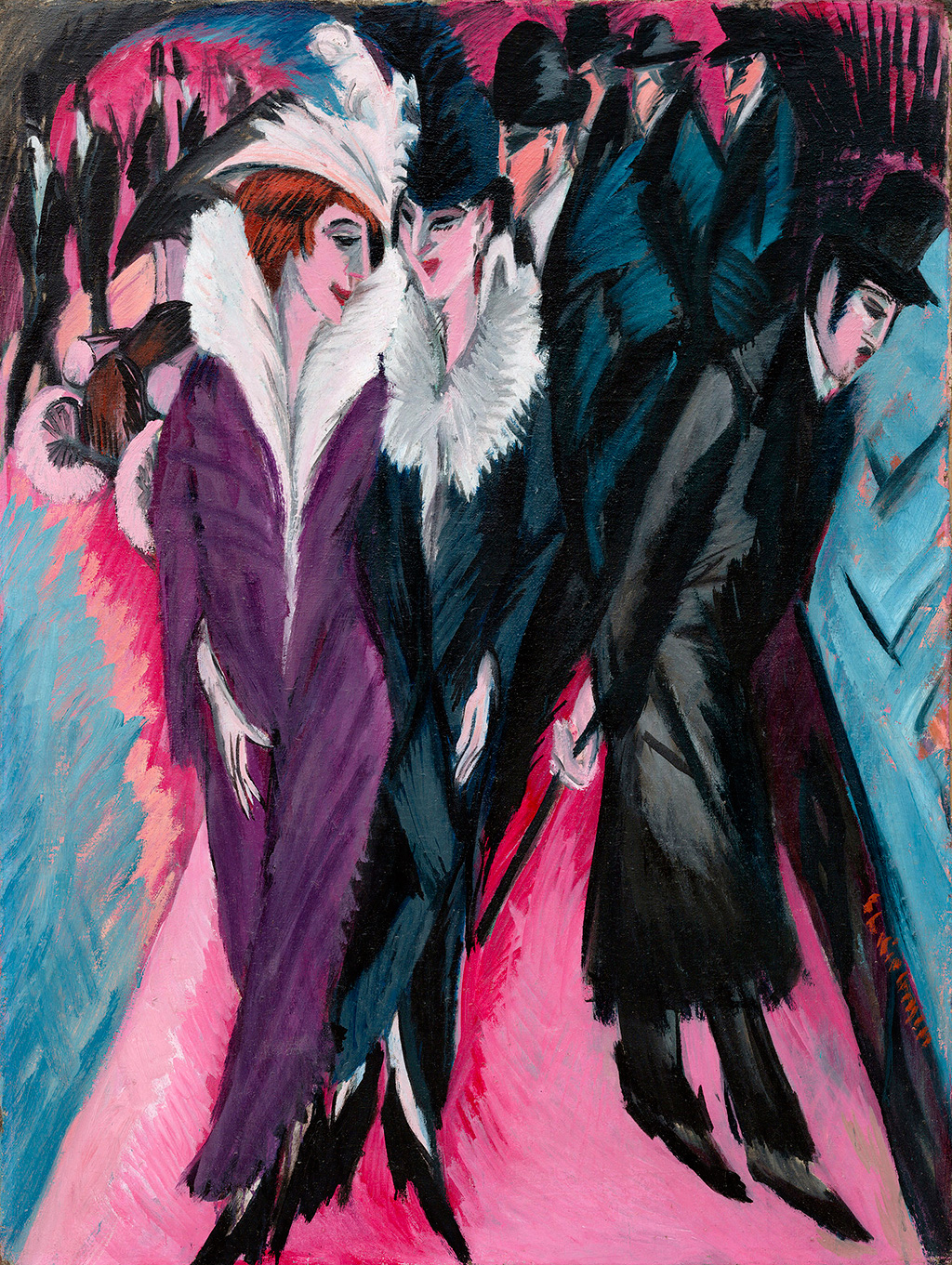Street, Berlin continued a series of Kirchner paintings over a three year period which concentrated on the lives of prostitutes and their pimps in various parts of central Berlin.
This particular composition arrived at the start of this journey, in 1913. The artist's portrayals of city life produced an atmosphere of chaos and energy, which perfectly suited the artist's bright and expressionist artistic style. Artworks such as Street, Berlin plus Berlin Street Scene, Street Scene and Street, Dresden remain some of his most celebrated paintings from the artist's entire career. Kirchner uses a bold contrast of dark and light, with powerful shades of pink and purple that immediately capture your eye. Most male figures are in standard black suits which deliberately avoids them taking too much attention, whilst the main figures are put in alternative colours in order to direct the eye as Kirchner intended.
The two women displayed centrally are prostitutes, though glamorously dressed. They sport blue and purple outfits which are both beautiful but also elegant, as the artist portrays these women in an honest but positive manner. The look happy and confident, which is perhaps out of sync with how many stereotype the women involved in this type of industry. It is the men who are predominantly without character, repeated endlessly as if ten-a-penny. It gives a feeling of the women being in-demand and courted, with the men fighting for their attention. This slant on the theme of prostitution continues into Kirchner's other paintings of around this period.
This particular artwork can now be found at the Museum of Modern Art in New York City, or at least under their ownership. Popular pieces such as this are regularly loaned out to exhibitions elsewhere and so it is always worth checking ahead to see what is on display at key international venues such as this. MoMa, as it is also sometimes called, features a number of other members of the Expressionist movement within its permanent collection, including the likes of Max Beckmann, Erich Heckel, Otto Dix, Oskar Kokoschka, Paul Klee and Franz Marc. In truth, there are over 200,000 artifacts in their collection making it impossible to mention all of the movements in which they are present. MoMA remains one of the most visited art attractions in the world, ranking well against the likes of the Louvre in Paris and the Tate Modern in the UK.
Germany has contributed a huge amount to the art world ever since the Northern Renaissance, with notable artists appearing within a wide number of different styles and movements. For example, whilst Durer and Cranach were part of more traditional art, there was also Friedrich who came during the rise of the Romancists and helped to promote landscape painting towards it becoming an accepted genre for the first time. There were then, of course, the 20th century Expressionists and a number of related artists who helped to bring about new ideas yet again, and some of them also became involved in the theory of colour within art that would influence many others that followed. This nation may not be as respected for art as the Netherlands or Italy, but it cannot be denied that it has also produced some of the continent's finest artists.





